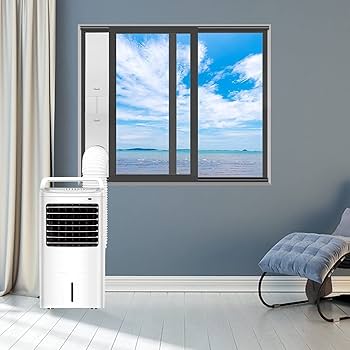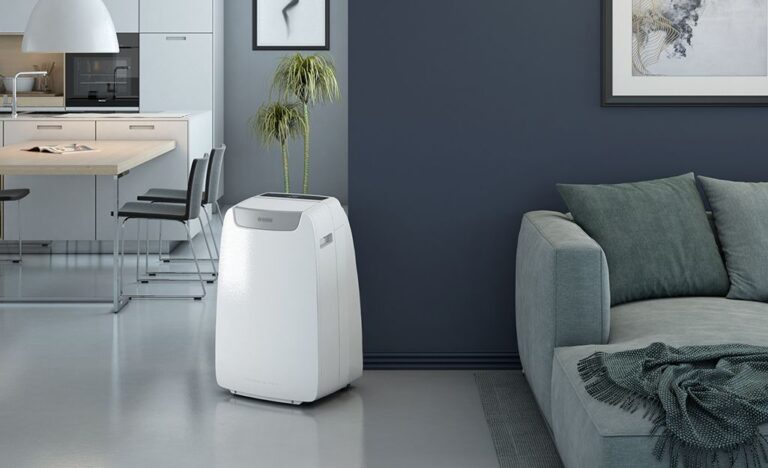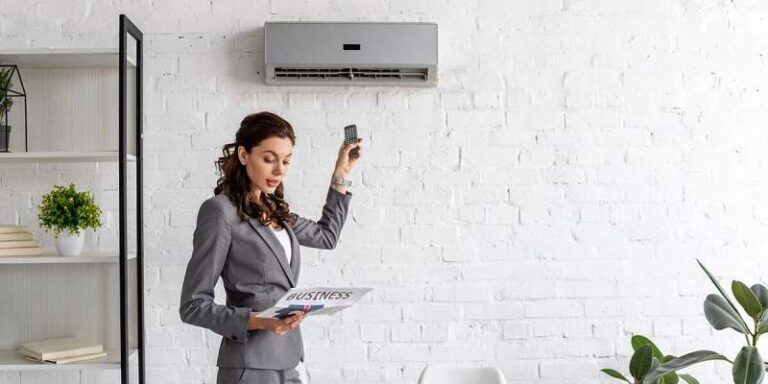Do I Need To Drain My Portable Air Conditioner? Essential Tips
Most portable air conditioners need periodic draining to remove the collected moisture. Check your unit’s manual for specific instructions.
Portable air conditioners are convenient for cooling specific areas without the need for permanent installation. These units often collect moisture from the air during operation, which may require draining. Some models have self-evaporating technology, reducing the need for frequent manual drainage.
Understanding your unit’s drainage needs is crucial for maintaining efficiency and preventing potential water damage. Regular maintenance, including checking and draining the water tank, ensures optimal performance and extends the lifespan of your portable air conditioner. Always refer to the user manual for detailed guidance on managing the water drainage system specific to your model. Proper care keeps your unit running smoothly and efficiently.
Credit: www.quora.com
Importance Of Draining
Draining your portable air conditioner is crucial for its performance and durability. Regular draining prevents water buildup and keeps the unit running efficiently. Ignoring drainage can lead to several issues, including water damage and reduced cooling efficiency.
Preventing Water Damage
Water damage can occur if the air conditioner is not drained. Excess water can overflow and damage your floors and furniture. This can also create a breeding ground for mold and mildew, which are harmful to health.
To avoid water damage, check the unit’s water level frequently. Use a drain hose or a built-in pump to remove excess water. This simple step can save you from costly repairs and health risks.
Maintaining Efficiency
Maintaining efficiency is another reason to drain your portable air conditioner. Water buildup can strain the unit and reduce its cooling ability. This makes the air conditioner work harder, consuming more energy and increasing your utility bills.
Regular draining ensures the unit operates at its best. An efficient air conditioner cools your space effectively and saves energy. A well-maintained unit also has a longer lifespan, providing you with reliable cooling for years.
How Portable Acs Work
Portable air conditioners are a convenient way to cool your space. They are easy to set up and move around. Understanding how they work can help you use them better.
Cooling Mechanism
Portable ACs cool air using a refrigerant. The refrigerant absorbs heat from the air. The unit blows out cool air into your room. This process lowers the room temperature efficiently.
Condensation Process
As the air cools, moisture condenses inside the unit. The condensation process creates water. This water needs to be managed.
Some portable ACs have a self-evaporating system. They release the moisture through the exhaust hose. Others have a drainage system where you need to empty a water tank.
Check your AC’s manual for its specific condensation process. Knowing this helps you maintain your unit properly.
Signs Your Ac Needs Draining
Portable air conditioners are convenient, but they need regular maintenance. One key task is draining the unit. Ignoring this can lead to various issues. Here are the signs your AC needs draining.
Water Leaks
Water leaks are a major sign. If you see puddles around your AC, it needs draining. Leaks can damage your floor and furniture. Regularly check the water tank and drain it.
Reduced Cooling Performance
If your AC isn’t cooling well, it might need draining. Excess water can affect cooling efficiency. The unit works harder and uses more energy. This can increase your electricity bill.
| Sign | Cause |
|---|---|
| Water Leaks | Full Water Tank |
| Reduced Cooling | Excess Water |

Credit: m.youtube.com
Manual Vs. Automatic Draining
When using a portable air conditioner, draining the unit is essential. There are two main methods: manual draining and automatic draining. Each has its own set of steps and benefits. Understanding both can help you decide which is best for your needs.
Manual Draining Steps
Manual draining involves emptying the water collected in the unit’s tank. Follow these simple steps:
- Turn off the air conditioner and unplug it.
- Locate the drain plug or valve.
- Place a container beneath the drain plug.
- Remove the plug and let the water drain out.
- Once empty, replace the drain plug securely.
- Plug the unit back in and turn it on.
Ensure you drain the water regularly to keep the unit running efficiently. Manual draining is straightforward but requires regular attention.
Automatic Draining Systems
Automatic draining systems simplify the process by using built-in pumps or continuous drain hoses. Here’s what you need to know:
- Built-in Pumps: These pumps automatically push water through a drain hose.
- Continuous Drain Hoses: These hoses allow water to drain constantly into a sink or drain.
Automatic systems reduce the need for frequent manual intervention. They are ideal for long-term use or in spaces where constant monitoring is difficult.
Whether you choose manual or automatic draining, both methods ensure your portable air conditioner runs smoothly. Select the one that fits your lifestyle and maintenance preferences.
Tools For Draining
Draining your portable air conditioner is important for its efficiency. Knowing the right tools can make this task easy and safe.
Necessary Equipment
To drain your portable air conditioner, you will need some basic tools. Here is a list of necessary equipment:
- Drain hose: This helps channel the water out.
- Bucket: To collect the water if a hose is not used.
- Gloves: For keeping your hands clean and dry.
- Towel: To wipe up any spills.
These tools are easy to find and use. Make sure you have them ready.
Safety Precautions
Safety is very important when draining your portable air conditioner. Here are some safety precautions:
- Unplug the air conditioner before you start.
- Wear gloves to protect your hands.
- Use a bucket or drain hose to avoid spills.
- Keep the area dry to prevent slipping.
Following these steps will keep you safe. Always be careful when dealing with water and electricity.
Frequency Of Draining
Understanding the frequency of draining your portable air conditioner is important. It ensures the unit functions efficiently and prevents potential damage.
Climate Considerations
The climate in your area affects how often you need to drain your air conditioner. In humid regions, the unit collects more moisture. This means you’ll need to drain it more frequently.
For instance, in tropical climates, you might need to drain your unit daily. In drier regions, the need for draining decreases significantly. Sometimes, you might only need to drain it once a month.
| Climate Type | Draining Frequency |
|---|---|
| Humid | Daily |
| Moderate | Weekly |
| Dry | Monthly |
Usage Patterns
How you use your portable air conditioner also impacts the draining frequency. If you run the unit continuously, it collects more moisture.
For occasional use, the frequency of draining decreases. Consider these usage patterns:
- Continuous Use: Daily draining might be necessary.
- Moderate Use: Draining every few days is often enough.
- Occasional Use: Weekly or even monthly draining can suffice.
Monitoring the water level indicator on your unit helps determine the right frequency. This ensures your portable air conditioner works efficiently and lasts longer.
Alternative Solutions
Draining your portable air conditioner can be a hassle. Sometimes, other solutions might work better for your needs. Here are some great options to consider.
Using A Dehumidifier
A dehumidifier can be a great alternative. It helps to remove excess moisture from the air. This can reduce the need to drain your portable air conditioner.
- Reduces Moisture: Dehumidifiers work by sucking in moist air. They then remove the moisture and release dry air.
- Easy to Use: Most dehumidifiers are simple to operate. Just plug it in and let it work.
- Energy Efficient: Modern dehumidifiers consume less power. This can save you money on your energy bills.
Using a dehumidifier means less work for your portable air conditioner. This can extend its life and improve performance.
Upgrading Your Ac Unit
Sometimes, an upgrade might be necessary. Newer models come with advanced features. These can make maintenance much easier.
| Feature | Benefit |
|---|---|
| Self-Evaporating System | Reduces or eliminates the need to drain water. |
| Built-in Dehumidifier | Helps manage moisture levels better. |
| Energy Star Certified | Saves on energy costs and is environmentally friendly. |
Newer models can offer better efficiency and convenience. This can make a big difference in your comfort and ease of use.
Consider these options to make your life easier. They can help you avoid the hassle of draining your portable air conditioner.

Credit: m.youtube.com
Troubleshooting Common Issues
Portable air conditioners are handy, but they can encounter issues. Understanding these problems is key. Here, we focus on troubleshooting common issues.
Blocked Drains
A blocked drain can cause water to pool in your air conditioner. This can lead to leaks or reduced efficiency. Ensure you clean the drain regularly.
- Turn off the unit and unplug it.
- Locate the drain plug and remove it.
- Use a small brush to clear any blockages.
- Replace the drain plug and plug in the unit.
Regular maintenance prevents blockages and keeps your unit working efficiently.
Malfunctioning Sensors
Malfunctioning sensors can cause incorrect readings. This may stop the unit from draining properly.
- Turn off and unplug the unit.
- Access the sensor area, usually near the drain.
- Check for dirt or debris around the sensors.
- Gently clean the sensors with a soft cloth.
- Plug the unit back in and test it.
If sensors still malfunction, consider replacing them.
Maintaining sensors ensures your unit runs smoothly.
Frequently Asked Questions
What Happens If You Don’t Drain Your Portable Air Conditioner?
Failing to drain your portable air conditioner can lead to water damage, mold growth, and decreased efficiency. It can also cause the unit to shut down, leading to potential overheating and mechanical issues. Regular drainage ensures optimal performance and longevity of the air conditioner.
How Do I Know If My Portable Air Conditioner Needs To Be Drained?
Check the unit’s indicator light or digital display. Water collection may trigger an alert. Manual inspection can confirm excess water.
How Do I Drain My Portable Air Conditioner?
To drain your portable air conditioner, locate the drain plug. Place a container underneath and remove the plug. Allow water to drain completely. Replace the plug securely.
Conclusion
Draining your portable air conditioner is crucial for optimal performance. Regular maintenance ensures it runs efficiently. Check the unit’s manual for specific instructions. Keeping the unit clean and dry prevents mold and mildew. Proper drainage extends the lifespan of your air conditioner.
Enjoy a cool and comfortable environment with these simple steps.







